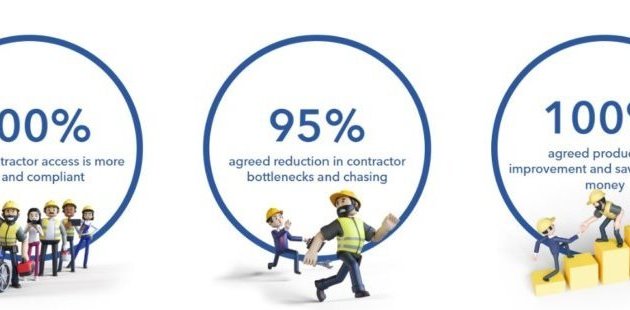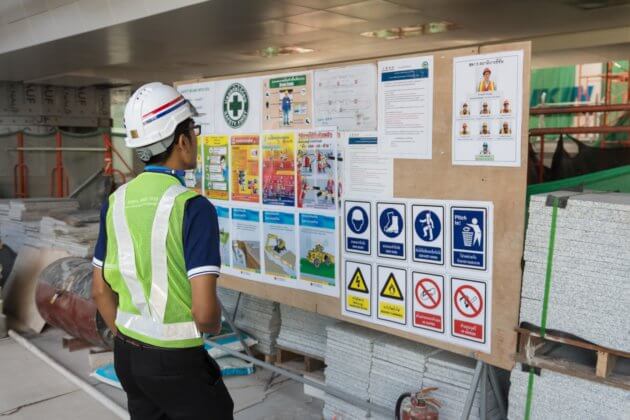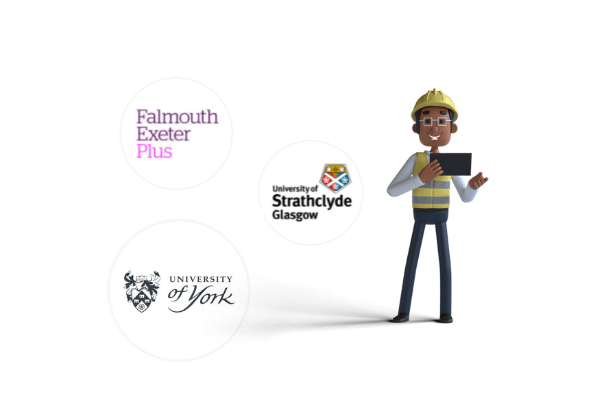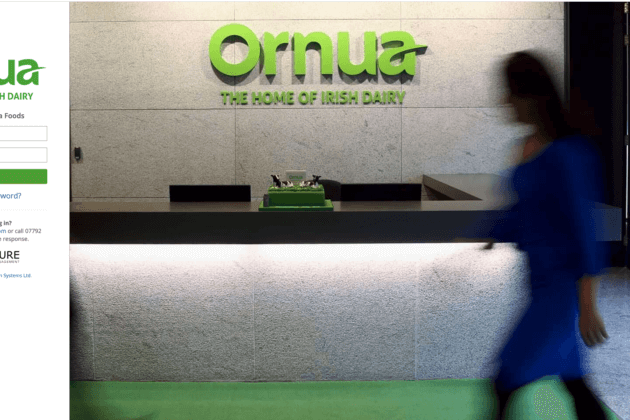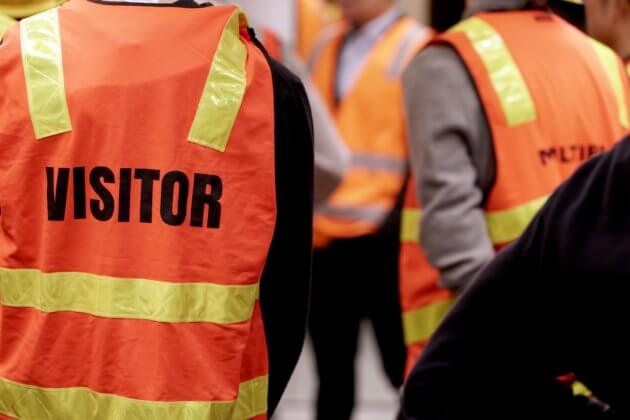- Why Verature?Find out why Verature is the best system for continuous contractor compliance.
- Arrive, Work & Stay Safe
- Removes Paper & Spreadsheets
- Tracks Key Contractors
- Instant 360 Visibility
- Contractor Management Dashboards
- Why Contractor Management Software
- Our Customer Reviews
- Pricing
We don’t hide behind fancy sales teams before we tell you, our prices.- Clients
See who we are working with and what they have to say about Verature.- Resources
Check out our blog, useful guides, whitepapers and product videos.- Prequalification and Induction Guide
- Contractor Compliance Guide
- Mini-Audit your Permit to Work System
- Health and Safety Audit Checklist
- Resource Library
- Blog
Book a demo
Book a demoInductions
Learn what should be included in a comprehensive induction program to effectively onboard contractors.
Contractor Compliance
From best practices to industry insights, our whitepapers are packed with valuable information that can transform your contractor management process and achieve contractor compliance.
Digital Transforming Contractor Procedures
Discover the power of digital transformation with our case studies and useful blogs. Learn how businesses like yours have successfully implemented digital solutions to streamline their contractor management and achieve greater efficiency.
Control of High-Risk Contractor Works and Permit to Work
Ensuring safe systems of work for high-risk contractor works is crucial. A Permit to Work system provides a robust framework to achieve this. A good system will help you effectively manage and control contractor activities, minimizing the potential for accidents or incidents. Find out more..
Verature Versus…
Too many options? Understand the full range of products on the market as we help you explore the market with some helpful comparisons.
Contractor Managagement for Your Sector, Industry, Size and Specific Needs.
Contractor management may impact a majority of companies, but their extent and the requirements can differ greatly. Find out more.
Contractor Management with Verature
Learn more about us and our streamlined contractor management system.
Verature’s A-Z Glossary
Auditing refers to the process of evaluating and examining the effectiveness of health and safety practices, procedures, and compliance within an organization or job site.
Health and safety auditing involves systematic reviews of safety policies, risk assessments, safety training, emergency procedures, and overall safety performance. The goal of auditing is to identify areas of improvement, assess compliance with regulations and standards, and ensure that contractors and employees adhere to established safety protocols.
Behavioral Safety Observation (BSO) is a systematic process that involves trained individuals observing and recording the behaviors of contractors and employees in the workplace to identify potential safety risks and promote safe practices.
During behavioral safety observations, designated personnel or safety observers monitor work activities, interactions, and adherence to safety protocols. The goal is to recognize both safe behaviors and at-risk behaviors, such as not wearing appropriate personal protective equipment or taking shortcuts in safety procedures.
Ensuring contractors adhere to legal and regulatory requirements, industry standards, and company policies.
The process of conducting research and investigation to assess a contractor’s suitability and reliability
An Emergency Response Plan is a comprehensive and detailed set of procedures and protocols designed to address and manage potential emergencies or crises that may occur in the workplace or on a job site.
The Emergency Response Plan outlines the steps to be taken in the event of various emergency situations, such as fires, chemical spills, natural disasters, medical emergencies, or security threats. It includes evacuation procedures, communication protocols, roles and responsibilities of team members, assembly points, and contact information for emergency services.
Fall protection refers to the set of measures and equipment implemented to prevent falls from heights and protect workers, including contractors, from serious injuries or fatalities. It is especially relevant in industries where work is conducted at elevated locations, such as construction, maintenance, and roofing.
Fall protection measures may include safety harnesses, lifelines, guardrails, safety nets, and personal fall arrest systems (PFAS). Employers and site managers must assess the risks of working at heights and provide appropriate fall protection equipment and training to contractors and employees.
By ensuring proper fall protection, organizations enhance worker safety and reduce the likelihood of accidents related to working at elevated positions, making it a crucial aspect of health and safety management
A contractor responsible for overseeing and coordinating all aspects of a construction project. Also referred to as: the main contractor or principal contractor.
the set of laws, regulations, policies, and practices designed to protect the health, safety, and welfare of workers and the public in the workplace and other environments. It places legal duties on employers to ensure the health, safety, and welfare of their employees, as well as the health and safety of others who may be affected by their work activities, such as contractors, visitors, and the general public. Both employers and contractors have a duty to assess and manage risks, provide training and information to workers, ensure the safe use of equipment and machinery, and maintain safe working conditions.
Incident reporting refers to the process of documenting and reporting any workplace incidents or near-misses that involve contractors, employees, or visitors.
When an incident occurs, such as an accident, injury, property damage, or a near-miss (an event that could have resulted in an accident but did not), it is crucial to report it promptly. Incident reporting allows organizations to gather information about the event, investigate its causes, and implement corrective actions to prevent similar incidents in the future.
A Job Hazard Analysis (JHA), also known as Job Safety Analysis (JSA), is a systematic process used to identify and analyze potential hazards associated with specific tasks or jobs performed by contractors and employees.
During a Job Hazard Analysis, each step of a task or job is broken down, and potential hazards are identified, along with the corresponding risk levels. The goal is to proactively identify and address safety risks, allowing organizations to implement appropriate control measures and safety protocols to mitigate or eliminate the identified hazards.
Specific metrics used to measure and evaluate contractor performance.
Coverage that protects contractors and organizations against potential legal claims.
Mandatory training refers to essential training programs and courses that contractors and employees are required to complete to ensure compliance with health and safety regulations and organizational policies.
Near-miss reporting is a process where contractors and employees report incidents that could have resulted in accidents, injuries, or property damage but did not. It involves the documentation and investigation of near misses to identify potential hazards and prevent similar incidents in the future. Encouraging near-miss reporting fosters a proactive safety culture and helps improve overall health and safety practices in the workplace.
The process of integrating/appriving a new contractor into the organization, providing necessary training and induction, access, information and completing all due diligence checks.
Personal Protective Equipment (PPE) refers to specialized clothing, gear, or equipment worn by contractors and employees to protect themselves from potential workplace hazards, injuries, and exposure to harmful substances.
Examples of PPE may include safety helmets, safety glasses, earplugs, respirators, gloves, safety boots, high-visibility vests, and full-body suits.
The contractor qualification process involves assessing and verifying the skills, credentials, experience, and suitability of a contractor to perform specific tasks or services for a particular project. It involves evaluating the contractor’s qualifications, certifications, licenses, education, and past work experiences to ensure they meet the necessary requirements to successfully carry out the work.
Contractor qualification is a critical step in contractor management, as it helps mitigate risks, ensures compliance with industry standards and regulations, and increases the likelihood of a successful and productive working relationship.
Work performed by contractors in a location separate from the organization’s physical office.
A contractor hired by the primary contractor to perform a part of the project or specific tasks.
Monitoring contractor working hours to ensure accurate compensation and adherence to contractual terms.
Administering and controlling contractor access to company systems and resources.
Visitor Management: Visitor management refers to the process of regulating and monitoring individuals who visit a workplace or job site, including contractors, vendors, clients, and other visitors. It involves implementing procedures to record and track visitor entry and exit, ensuring they have proper authorization, and providing them with necessary information, safety guidelines, and access restrictions.
Effective visitor management enhances security and safety in the workplace by controlling access to sensitive areas and ensuring that visitors are aware of potential hazards and emergency procedures.
A formal document authorizing a contractor to perform specific tasks or services.
Cross-Functional Collaboration involves encouraging collaboration and cooperation between contractors and employees from different departments or areas of expertise in order to foster safer working practices and successful partnerships.
A Yearly Safety Audit is a comprehensive examination of an organisation’s health and safety practices, policies, and procedures conducted on an annual basis. It involves reviewing the company’s safety records, incident reports, safety training, and compliance with health and safety regulations.
The Yearly Safety Audit helps identify areas of improvement, potential risks, and non-compliance issues related to health and safety practices. By conducting regular audits, organisations can proactively address safety concerns, implement corrective measures, and ensure a safe working environment for employees and contractors. This ongoing evaluation fosters a culture of safety and continuous improvement in health and safety management.
A Zero Accident Policy is a proactive approach and commitment by an organization to eliminate workplace accidents and injuries. It involves setting a goal of achieving zero incidents, accidents, or injuries within the workplace or job site.
To implement a Zero Accident Policy, organizations prioritize safety by providing comprehensive training, hazard assessments, safety protocols, and regular safety meetings.
Frequently Asked Questions
Still have questions? Here’s Some FAQ’s.
Introducing Verature’s contractor management system – the ultimate solution for streamlining your outsourced work and contract worker management. With our built-in workflows and digital dashboards, you can say goodbye to labor-intensive admin tasks and human errors. From prequalification to check-in and permit issue, our system covers it all. Manage job orders, communicate expectations, obtain risk assessments, and monitor works with ease. Boost efficiency, ensure compliance, and achieve consistent results. Upgrade to Verature’s contractor management system today and revolutionize your operations.
The consequence of poor contractor management can lead to accidents and dangerous incidents. Companies found responsible face fines and prosecution for negligence. To avoid these situations, it is crucial to follow proper contractor management processes. Implementing a system can help enforce robust processes, ensuring thorough planning, instruction, and risk assessment. Unlike paper-based systems, a digital system offers efficiency, control, and security. It eliminates the risks of corruption, lost data, and human error. Gain a real-time overview of your operations and take action now to protect your business.
With Verature’s cloud-based contractor management software, you can start benefiting from our tools in as little as a week. Our implementation and training process, guided by a dedicated project manager, typically takes between 2-12 weeks. Don’t wait any longer to streamline your contractor management – get in touch with us today and let us help you get up and running in no time!
We offer comprehensive support during your 2-month ‘adoption phase’, including hand-holding assistance, 2 webinar training sessions, and ongoing application support. Throughout your term, we are here to provide continuous support. If you require additional training or refresher sessions, we offer on-site or webinar options at an additional cost. Take advantage of our training and support services to maximize the benefits of our product. Contact us today to learn more!
All our pricing is published on our website here. Tiers start from as little as £499 per month and all include unlimited Users and Contractors. Download the available onboarding kit for a full breakdown of pricing and available features!
Verature is the solution you’ve been waiting for! It quite simply ‘does what it says on the tin’.
Say goodbye to outdated paper-based processes and hello to a streamlined system that will revolutionise the way you manage contractors. With Verature, you can easily comply with health and safety standards and ensure effective pre-qualifying features. From job booking to document control, Verature has got you covered every step of the way. With built-in workflow, alerts, and escalations, you’ll have instant visibility over site activities and be able to report on them effortlessly.
With Verature, you can ensure procedural compliance for your organisation without having to change your current process or rely on external resources. Take control and mitigate the risk of incidents and penalties with Verature. Don’t wait, try Verature today and experience peace-of-mind like never before.
















